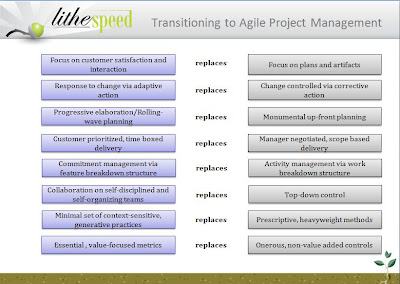In the Agile community and in some organizations adopting Agile methods, there continues to be a struggle with the role of the project manager on Agile teams. Some agile enthusiasts hold that project managers are no longer necessary, since integrated Agile teams break down organizational silos and remove the division of labor. There’s an engaging debate going on right now, sparked by Jim Highsmith’s Cutter advisory, No More Self Organizing Teams. My contribution to that discussion can be found here: https://blog.cutter.com/2007/09/13/no-more-self-organizing-teams/#comment-229.
In my book, Managing Agile Projects, I laid out the definition of a role, principles, and activities for the Agile Manager. Over the time since, some of that work has been refined. Here are some key points that relate to Agile Project Management and the role of the project manager on Agile projects.
-
- The Agile Manager’s role is primarily to lead project teams in creating and responding to change. The Agile Manager does this through Agile principles: small batches, small, integrated teams; and small, continuous improvements. Small batches of features create the fast, flexible flow of value to the customer. Small, integrated teams reduce wasteful handoffs, foster innovation and generate higher productivity. Small, continuous improvements are the essence of learning and adaptation and create flexibility to change.
-
- Light touch leadership is the Agile Manager’s work of energizing, empowering and enabling project teams to rapidly and reliably deliver customer value: by engaging customers, and continuously learning and adapting to their changing needs and environments.
- While a lot of project management expertise conveys to Agile Project Management, some replacements are necessary for managers seeking to manage Agile projects. See the above diagram for a list of necessary replacements.
I believe that the role of the Agile Project Manager will continue to evolve as Agile methods continue to be adopted.

